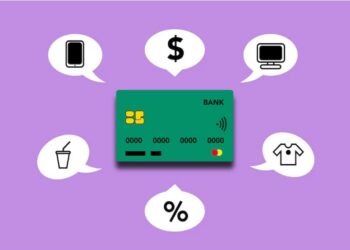In today’s digital world, more and more people are opting to shop online for various reasons. The advancement of technology has made online shopping a more preferred choice compared to in-store purchases. Online platforms offer excellent opportunities to get the best deals, compare prices, and have purchases delivered directly to your doorstep. Additionally, many online retailers provide straightforward return policies. Overall, online shopping is one of the most beneficial innovations that the internet has produced.
Yet, the convenience of online shopping isn’t without its pitfalls, particularly the increased risk of financial fraud. When shopping online, there is always the chance that a cybercriminal could be lurking, ready to exploit any vulnerability. A single breach in security could result in significant financial losses. Therefore, it’s crucial to understand how to recognize and defend against online scammers. Overall, online shopping can be good for you if you know how to play your cards right. You should be familiar with strategies that can help you save money, protect your personal information, and make more informed shipping decisions.
In this post, we’ll present proven strategies that work for online shopping to optimize your shopping experience. Let’s get into it.

What is Online Shopping?
Online shopping is the process of buying goods and services over the Internet. This form of shopping allows consumers to directly purchase products from sellers using web browsers or mobile apps without the need to visit a physical store. Shoppers can browse a wide array of products, compare prices, read reviews, and make purchases at any time. This can be done from the comfort of their homes or while on the go. Usually, digital methods such as credit/debit cards, digital wallets, or other online payment systems are used to pay for these purchases. The purchased items are then delivered to the buyer’s address, offering a convenient and often customizable shopping experience. Thanks to the internet, online shopping has grown significantly and continues to expand with advancements in technology and digital security.
Best Strategies for Online Shopping
The following are some effective strategies for optimizing your online shopping experience:
Shop on Only Popular Websites
The internet offers a vast array of shopping options, so it’s important to be cautious about where you choose to shop. While online searches can direct you to numerous retailers, not all of them are reputable. Therefore, it’s advisable to shop at well-known and trustworthy stores. For instance, established retailers like Jumia, Konga, Amazon, and Walmart offer a broad selection of products. Plus, they are well known for their reliability.
Compare Prices
There are numerous stores available online to shop for different items. Sometimes, it may get confusing and overwhelming knowing where exactly to shop from. Use price comparison tools and websites to ensure you’re getting the best deal. Many browsers also offer extensions that can automatically compare prices across different sites.

Check Reviews
When you encounter a less-known seller, it’s important to conduct thorough research before following through with your purchase. Start by searching for online reviews to assess the seller’s reputation. Google can be a useful tool for finding these reviews. However, be aware that online reviews aren’t always reliable. Excessive positive feedback without any criticism might also be a red flag. In such situations, trust your instincts and carefully consider your decision before proceeding with a purchase.
Look out for Discounts and Promos
Before finalizing your purchase, search for any available promo codes or discounts that you can apply to your order. Some websites and apps offer certain discounts to different categories of buyers that you can benefit from.
Another thing to look out for is free delivery. Many stores offer free delivery as part of their discount deals. If you want to save costs and stay within your shopping budget, you can look out for such deals.
Stay Secure
The risk of online fraud is especially common when shopping online. Hence, you should be very cautious about dropping your personal information and ensure that your payment is secure. A good indicator of a secure payment process is the presence of a security certificate on the website. To verify the website’s authenticity, examine the payment page for a green padlock icon located to the left of the website address in your browser window. This green padlock signifies that the website holds a valid security certificate, ensuring that your payment information is protected.
Keep Records
Make sure to keep records of all your online transactions, including receipts, order numbers, product descriptions, and prices. It’s also wise to save any emails or messages that you may have exchanged with the seller. These records can be crucial if you need to address any issues that arise later.

Sign-up for Newsletters
Some retailers often send exclusive deals and early sale notifications to their mailing list subscribers. Signing up can give you access to discounts that aren’t available to the general public. This way, you get to save money and not exceed your shopping budget.
Takeaway
Online shopping has become increasingly common, making it essential to understand how to maximize your shopping experience. If you have ever experienced identity theft or online fraud, this post will provide valuable tips to help prevent future incidents. Furthermore, if you don’t know the best practices to help you navigate shopping online, this post is for you.
For those seeking the most secure payment option, consider using Changera’s virtual card. It is accepted globally across all websites and comes without transaction limits. At Changera, we believe everyone deserves a hassle-free shopping experience. You can download the Changera app from the Google Play Store or the App Store and get your virtual card today.







Discussion about this post